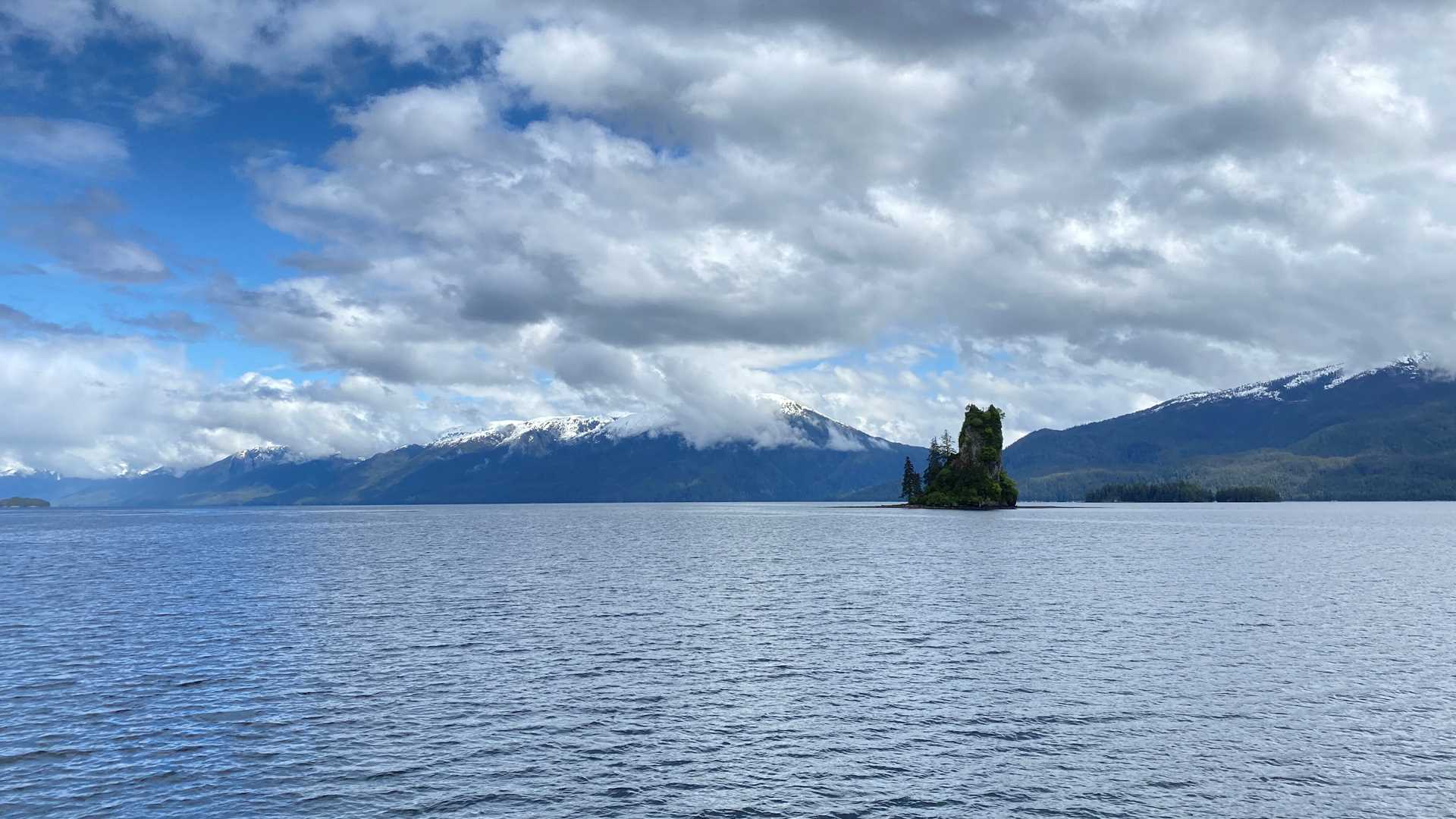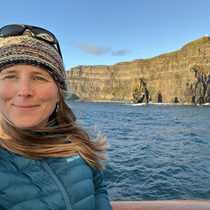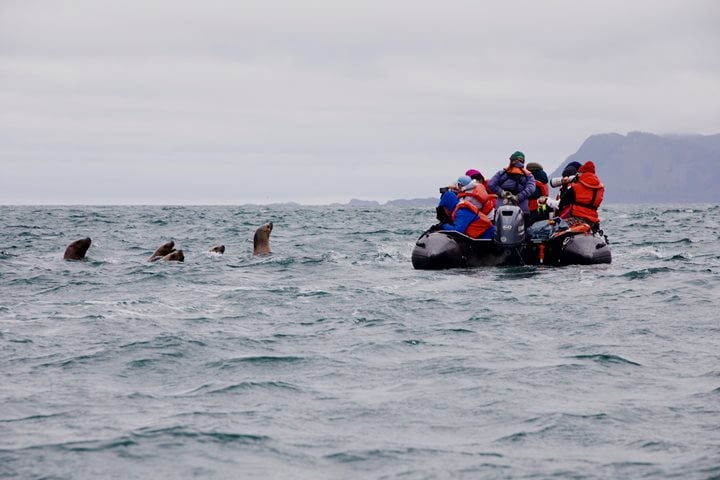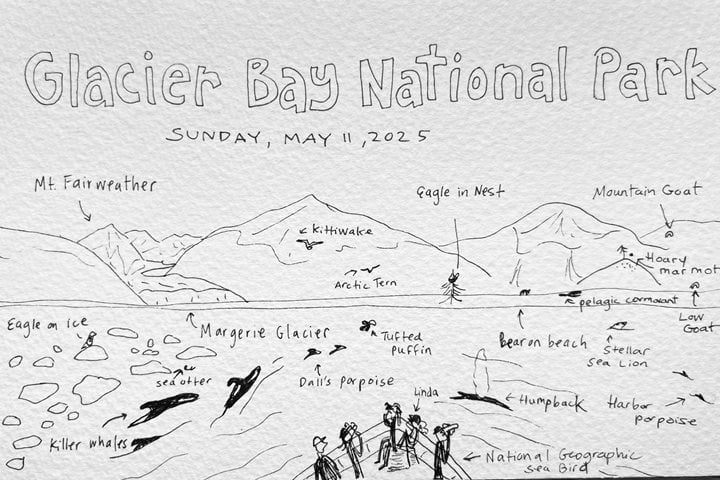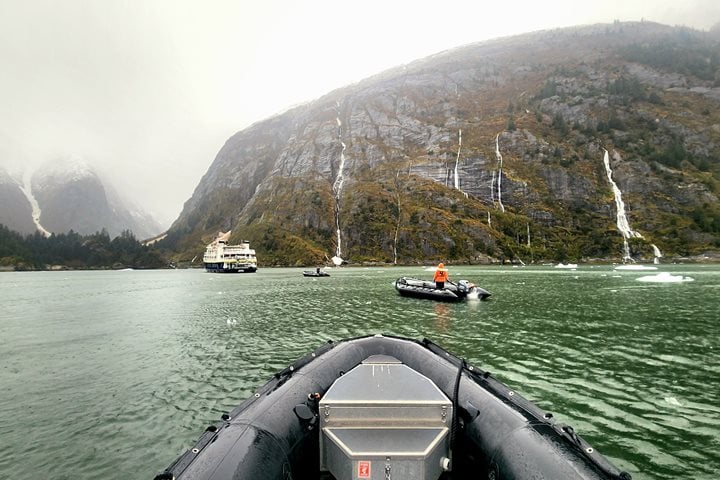Several orcas graced our presence as we woke up for our last morning in Canadian waters and waited to be granted entry into the United States. Three dorsal fins danced above the waterline, offering fleeting glances of the beautiful black and white giants hidden below. A charter vessel skillfully pulled alongside to bring customs and border protection officers onto National Geographic Sea Bird. They checked that all passports were present and correct before wishing us a safe passage.
Many a day in Misty Fjords National Monument is indeed spent shrouded in mist, but we spent our day enjoying the beautiful sunshine that greeted us on the US side of the border. Heading up into Behm Canal, we passed by Eddystone Rock, a volcanic plug that had been launched and deposited in the middle of the strait–an oddity compared to the rocks on either side. As we navigated into narrower and narrower fjords, we increasingly appreciated our miniature size compared to the granitic cliffs towering above us. We made a brief stop in Punchbowl Cove and appreciated the sheer cliffs that were carved during the last glacial retreat. Our destination for the afternoon was the end of Rudyerd Bay, where the ship passed through Owl Pass to reveal a secluded bay for Zodiac tours and kayaking. Highlights in the bay included bald eagles, basking harbor seals, black-legged kittiwakes, pigeon guillemots, Barrow’s goldeneye, surf scoters, and harlequin ducks.

